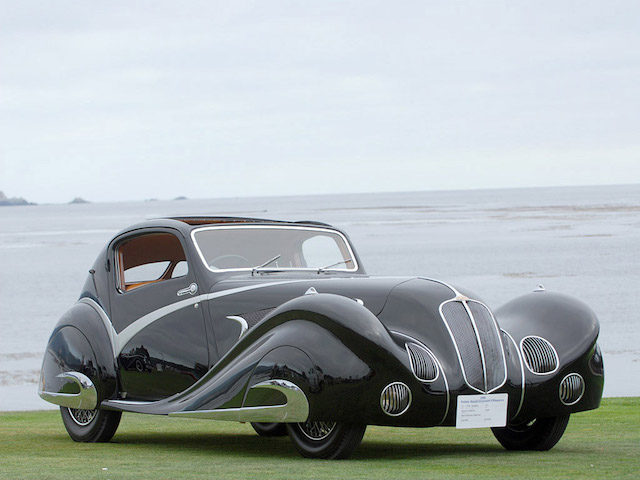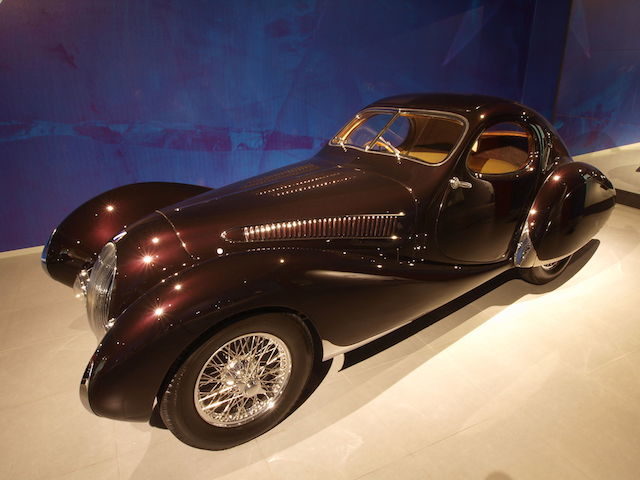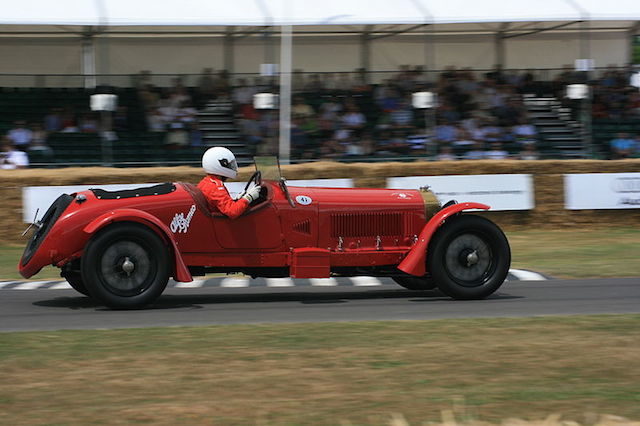 [1]
[1]The 1936 Delahaye 135 coupe designed by Figoni et Falaschi, commissioned by French racing driver Albert Perrot, is still considered one of the most beautiful and functional cars ever made. Photo from blog.driveway2day.com. [2]
The timeless and flowing designs of Giuseppe Figoni during the 1920s through 1950s inspired coachbuilders worldwide, and still has a dramatic impact on the cars being built today. Goutte d’Eau literally means “a drop of water” in French, and the cars designed in this style are very representative of that phrase when viewed from the side.
Specifically, the profile of a car that has a rounded roof that tapers and flows down to the rear as a drop of water appears, is considered a member of this body style. Originating in the coachbuilding firm of Figoni et Falaschi in Paris, these were some of the most attractive and functional cars of their era.
 [3]
[3]The Talbot-Lago T150C SS Teardrop Coupe helped to resurrect the Talbot marque in 1936. Photo from wikipedia.org. [4]
Giuseppe Figoni did the design work with partner Ovidio Falaschi running the business and operational side of the company. Prior to partnering with Falaschi, the designer Figoni worked under his own name to create works for Delahaye, Bugatti, and Alfa Romeo.
In addition to the great automotive designs of the Europe’s best street cars, Figoni was also enlisted to design aerodynamic racecar bodies. In his resume was the Alfa Romeo 8C 2300 Le Mans, winner of the Le Mans 24 hour race from 1932 through 1934, and the Delahaye Type 138 18CV Special that set a 48-hour endurance record in 1934 in Montlhéry, France.
 [5]
[5]Figoni’s Alfa Romeo 8C 2300 Le Mans type. Photo from wikimedia.org. [6]
Among the characteristic styling of the period, the Figoni et Falaschi partnership put forth the Delahaye 135 coupe, and the Talbot-Lago T150C SS Teardrop coupe, both considered among the most beautiful auto designs of all time.
The advances in aircraft designs during this period had a great influence on Figoni, along with the Italian automotive designs from coachbuilders in the rising Italian design houses. The team stayed ahead of their rivals by presenting their latest builds at auto shows with models adorned with fashion accessories that matched the cars in style and color.
Goutte d’Eau Styling usually included raked grilles and windshields, pontoon fenders with fender skits on both the front and rear, stylized headlights and door handles that were flush to the body, along with other streamline features to complete the windswept look.